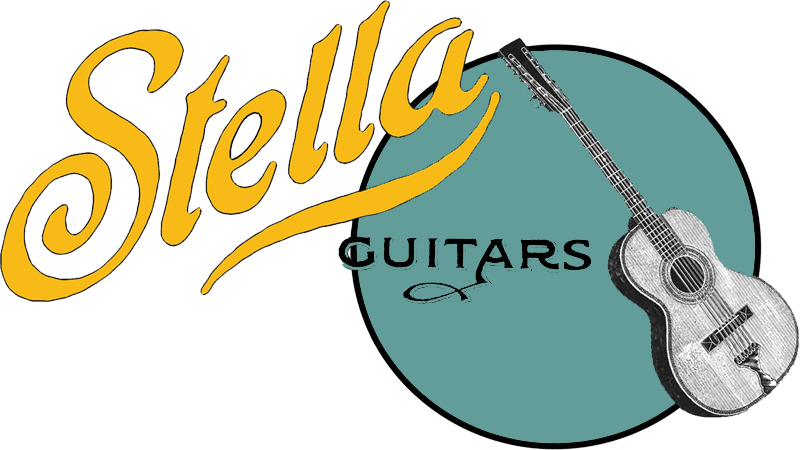1. All “A. Galiano” guitars were made by Oscar Schmidt.
Untrue. Although many Galiano guitars were relabeled Stellas made by Schmidt, a fair number of them were made by independent Italian American luthiers such as Antonio Cerrito, Raphael Ciani, and Joseph Nettuno. Still others were purchased from various large Chicago factories like Kay, Regal and Harmony.
2. All instruments with an “underlined” Stella logo were made in Jersey City.
Untrue. After buying out the bankrupted Oscar Schmidt Company, from 1939 until about 1942 Harmony continued to use the old underlined Oscar Schmidt logo on their “Stella” instruments. Some of these instruments were made from remnant parts acquired after their buyout of the Schmidt organization. Others were entirely made in their Chicago plant.
3. One can always identify an Oscar Schmidt-made guitar by the shape of the kerfed lining inside the instrument.
Untrue. It is commonly believed that only Oscar Schmidt used a combination of square kerfing along the top and beveled along the back, therefore this is the key to identification of genuine Oscar Schmidt instruments. It is true that most guitars and mandolins that Schmidt produced have square-shaped kerfed lining along the top edge and beveled along the back. But not all of them have this feature. There are more than a few Schmidt instruments that have square along both surfaces. And we have seen others with beveled in both the top and back position, a feature most often seen on very fancy koa wood models. Conversely, it is worth noting that other manufacturers occasionally mixed square and beveled kerfed linings on their instruments.
4. Harmony-made Stella guitars are made of “plywood”.
Untrue. Until the 1970s, the Harmony Company used only solid woods for just about every acoustic flat top instrument they made. Their Stella instruments were made from solid slab-sawn birch, which to the untrained eye often has a grain pattern that looks rather like “plywood”. Harmony Stella guitars usually have a poplar neck with a dyed maple or birch fingerboard. High-end Harmony flat tops feature solid mahogany and solid spruce components.
5. Stella guitars are ladder braced because it is a cheaper way to build a guitar.
Untrue. Although “x-bracing” is somewhat more labor intensive than ladder-bracing, this was not the primary reason Stella guitars were made using this bracing technique. The work force at the Oscar Schmidt factory in Jersey City was to a large extent comprised of European-trained craftsmen. The guitars they produced were ladder braced, not because it was the “cheap” way to build a guitar, but because this was the customary way steel stringed guitars were built in Italy, France and Germany until the mid-twentieth century. Italian-American makers such as Antonio Cerrito, Raphael Ciani and Joseph Nettuno made many great guitars using the same bracing patterns in use by the Oscar Schmidt factory. Also consider the esteemed Selmer-Maccafferi guitars made famous by Gypsy jazz great Django Reinhardt. These distinguished French steel string guitars are all ladder-braced and are very highly regarded! And they command hefty prices on today’s market. Like the Stella and Sovereign guitars, Selmer-Maccafferi guitars owe much of their distinctive tone to their ladder-braced construction.
From time to time we will update this feature with more Stella Myths and Factoids.
